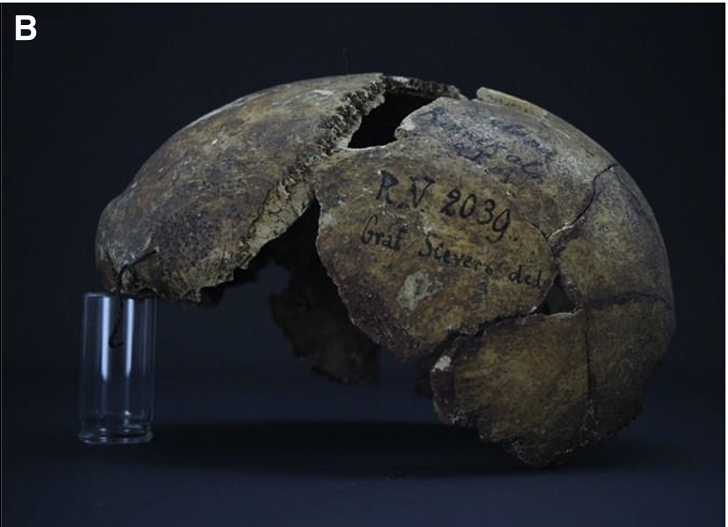Scientists have recently tested a skull found during the Victorian period for pathogens and discovered the bacteria that causes Black Plague present in the samples. The skull is from a man who died in Latvia, along the River Salaca where it feeds Lake Burtnieks. The skull was found in a midden (an ancient dumping ground) under layers of both charred and un-charred mussel shells in 1875 by amateur archaeologist, Carl Georg Count Sievers. The skull, known as RV 2039, was then sent to Germany to be examined by Rudolf Virchow, one of the fathers of modern germ theory. Recently the skull has been tested for ancient DNA and it was found to contain Yersinia pestis, the gram-negative bacteria responsible for the bubonic plague.

Researchers recently published a study on this specimen in the scientific journal, Cell Reports. Using radiocarbon dating the skull in question was found to be from between 5300 and 5050 years ago. The bones belonged to man of 20-30 years of age when he died. Along with the initial discovery of the skull was another skull belonging to a female of 12-18 years age.
Since then the remains of 2 other ancient people were found under the midden layers: an older man 35-45 years of age and an infant of unknown sex. The people who lived there are thought to have been hunter-gather-fishers who may have permanently or semipermanently settled near the river in order to take advantage of the plentiful sources of aquatic food there.
The researchers looked for DNA in the other specimens and didn’t find genomes of Y. pestis. The samples were taken from the petrous skull bones and teeth of ancient individuals. Teeth often hold on to DNA longer than other parts of the body due to the extreme hardness of tooth enamel.

Y. pestis is the bacteria that causes the bubonic plague, which was known as the Black Death in medieval Europe. 3 known plague events occurred in Europe in written history. But, this is
the oldest physical evidence of Y. pestis in an ancient human.
Infectious disease experts have long thought that Y. pestis split from its ancestor, Y. pseudotuberculosis, anywhere from 2,600 and 28,000 years ago. Up until now the oldest known plague victim to have been found died around 1,500 years ago.

The researchers working on the RV 2039 skull now suspect that this, the oldest case found to date, represents the earliest evolution of Y. pestis from Y. pseudotuberculosis, which makes this man patient zero when it comes to bubonic plague.
High coverage genome sequencing was performed on the Y. pestis recovered from RV 2039 and was found to be lacking genomes known for increased virulence. This means that RV 2039 was infected with what could have been a much less virulent and deadly ancestor to the type that killed an estimated 200 million people in Europe during the worst of the plagues between the Middle Ages and the 17th century.
The fact this that may have been a less-hardy strain also supports the theory that this was a new offshoot of Y. pseudotuberculosis that had not yet evolved to become the ravaging plague that we know it as today.
There are 16 known species of Yersinia, of which 3 are harmful to humans. Y. pseudotuberculosis has been linked to reactive arthritis and Y. enterocolitica has been linked to Crohn’s disease.

The study authors estimate that the split of Y. pestis and Y. pseudotuberculosis occurred around 7,000 years ago at the beginning of the Neolithic period when man was entering the last phase of the Stone Age.
SKM: below-content placeholderWhizzco for DOT

